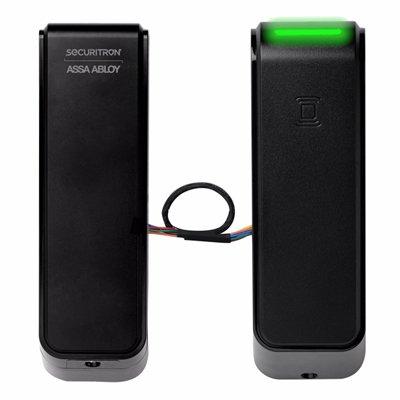Vanderbilt VBB-NRI bright blue / lite blue network reader interface
Technical Specification
- Make: Vanderbilt
- Model code: VBB-NRI
- Standalone/ Networkable: Networkable
- Wiegand Interface: Yes
- Voltage: 12 ~ 24 V DC
VBB-NRI connects to one card reader via Wiegand protocol, and then over the network to the VBB reader controller 10/100 Base-T Ethernet connection Supports DHCP or Static IP addressing Compatible with proximity, magnetic stripe and smart card technologies Suitable for small to mid-sized organisations with remote locations and an available IP network Reduces wiring and labour costs VBB-NRIs and VBB-RIs can be combined on a bright blue™ system Compatible with most card readers (any device with a Wiegand output) Two form C, single pole/double throw, mechanically latching 2A relays (pre-programmed for dedicated functionality) Four contact inputs Door exit request Door position switch Push button override Auxiliary input Facility lockdown via credential or external pushbuttton Degraded mode Metal enclosure with hinged and dual screw door On board connection for tamper switch Tamper switch, lock & key option available
Read more| Make | Vanderbilt |
|---|---|
| Manufacturer | Vanderbilt Industries |
| Category | Access Control>Access control readers |
| Model code | VBB-NRI |
| Standalone/ Networkable | Networkable |
| Wiegand Interface | Yes |
| Electrical Specifications | Voltage: 12 ~ 24 V DC |
| Environmental Specifications | Operating Temp oC: -40 ~ +55 C (-40 ~ +131 F) |
| Additional info |
|
| Download PDF version Download PDF version | |
You might be interested in these products
Related Whitepapers
10 top insights in access, cloud and more
Schooling the market on education security
Access and security in the age of hybrid working
The key to unlocking K12 school safety grants
Download5 surprising findings from OT vulnerability assessments
DownloadPhysical access control
DownloadHoneywell GARD USB threat report 2024
DownloadPalm vein recognition
Download














